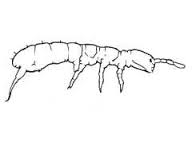In a recent study, we showed that the springtail Folsomia candida was quite sensitive the neonicotinoid insecticides imidacloprid and thiacloprid. This study aimed at determining the toxicity of both compounds to F. candida following exposure over three generations, in natural LUFA 2.2 standard soil. In the first generation, imidacloprid was more toxic than thiacloprid, with LC50s of 0.44 and 9.0 mg/kg dry soil, respectively and EC50s of 0.29 and 1.5 mg/kg dry soil, respectively. The higher LC50/EC50 ratio suggests that thiacloprid has more effects on reproduction, while imidacloprid shows lethal toxicity to the springtails. In the multigeneration tests, using soil spiked at the start of the first generation exposures, imidacloprid had a consistent effect on survival and reproduction in all three generations, with LC50s and EC50s of 0.21–0.44 and 0.12–0.29 mg/kg dry soil, respectively, while thiacloprid-exposed animals showed clear recovery in the second and third generations (LC50 and EC50 > 3.33 mg/kg dry soil). The latter finding is in agreement with the persistence of imidacloprid and the fast degradation of thiacloprid in the test soil.
Source:
van Gestel, C.A., de Lima e Silva, C., Lam, T. et al. Ecotoxicology (2017). doi:10.1007/s10646-017-1765-8
http://link.springer.com/article/10.1007/s10646-017-1765-8

- Login om te reageren
